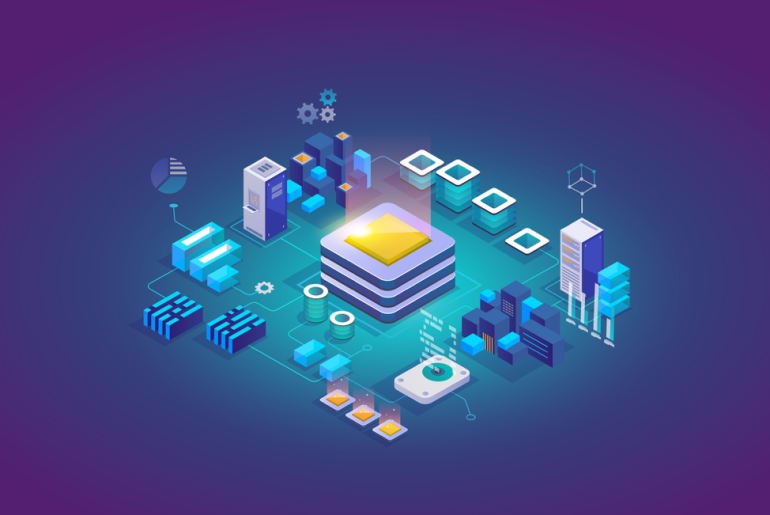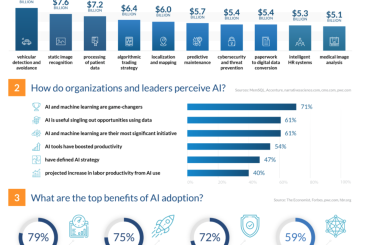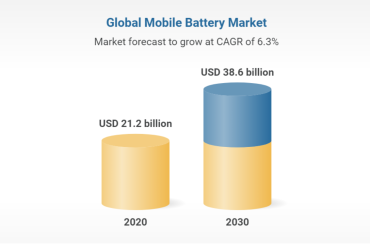App Development Trends
Look around you and notice how apps have come a long way and are capable of doing so much more. In the past decade, our reliance on mobile apps has grown substantially – we are more dependent than ever before. Apps like Lyft and have changed how we go around town and book places.
Similarly, you can order food through Uber Eats from the comfort of your home and are able to book a doctor’s appointment on the go. If we look at the figures, it is predicted that mobile apps will generate more than 613 billion dollars in revenue by 2025.
Everyone is hooked on their phone and the demand for innovative ideas keeps increasing. Be ahead in the game and look over recent trends. Keep reading as we go through a detailed breakdown of over 12 mobile app development trends.
1. AR and VR
In a world where the metaverse is taking over the stage – augmented reality and virtual reality are playing a vital role in making sure that apps are equipped with the most recent standards. Everyone underestimated the potential of AR and VR initially but over time, people are starting to understand the possibilities.
Even brands like IKEA considered AR and created an app where customers could place virtually place furniture around their house and see how it looks like before making an actual purchase. Shopping experiences are changing through AR. Google Maps recently integrated AR, allowing users to navigate around easily through Live View.
Predictions tell us that the AR & VR market will be worth around $250 billion by the next decade. An exponential rise is on the way, we suggest you buckle up.
2. Apps for Wearable Devices
Google recently announced its first smartwatch – the Pixel Watch and entered the world of wearable devices. Rightfully so, to be honest. Apple, Samsung, and Huawei are leading the market right now and everyone is getting on board.
The demand for apps is increasing just as much. Wearable devices are now part of a bigger ecosystem. Over the past few years, the number of users has doubled, and we expect more than a billion wearable devices to be connected to a wider network this year.
Mobile app developers in Houston have been working on different frameworks for wearable devices for quite some time now. It is about time businesses look at this side and explore an untapped audience.
3. Delivery Apps (Food & Grocery)
During the pandemic, we saw the importance of such on-demand apps. More than any other app type, it was delivery apps that peaked during 2020 and are projecting even further. To be more precise, we saw a 40% rise in terms of consumers during quarantine periods for both food and grocery apps.
On-demand services are no longer a part of the future and define how we order things now. When you think from a consumer’s point of view – you will realize that delivery apps are here to stay. Even as we transition to normality, people are accustomed to on-demand services.
It is probably one of the few app types that depending on the perspective – is for both B2B and B2C consumers. One app for the rider, and other for the customer.
4. Blockchain Integrated Apps
Blockchain defines more than cryptocurrency now and we are seeing how Samsung, Microsoft, Amazon, and countless others are trying to make the most out of it. Companies are embracing the technology now and are working towards inclusivity.
Mobile companies are now looking at DApps (decentralized apps) to ensure a secure experience. There are talks and everything is in the development stage right now but the future looks worthwhile. The biggest benefit of integrating blockchain anywhere is the transparency everyone gets.
Also, the transaction time is less and there is no need for any third-party interference. Companies are looking to move towards more autonomy.
5. Internet of Things (IoT) Everywhere
Being interconnected more and more is the norm these days. Look around your house and count the number of electronic devices that can be connected together. Most likely you have smartphones, a laptop, tablets, a TV, and a lot more.
The Internet of Things (IoT) starts from our home, navigates to the traffic, and then our workplaces. The more we connect, the more the demand for IoT-supported apps emerges. Hospitals rely on IoT to provide their patients with accurate diagnoses. And large-scale industries depend on IoT for productivity measures.
Take SmartThings by Samsung as an example – an app through which you can automate and control all your devices. The app is used by millions. The global market for the Internet of Things (IoT) is projected to reach $142 billion by 2026 when we factor in a CAGR of 17%.
6. Rise of Mobile Gaming
Mobile gaming is more than just Temple Run or Fruit Ninja now. We are talking about a market that has millions of users. There are billions of dollars at stake. In a lot of cases, mobile games have won over consoles. The stats prove so. PUBG Mobile and Call of Duty: Mobile alone generated total revenue of more than $8 billion.
Mobile gaming currently holds more than 57% of the total gaming revenue worldwide. Developing a game on a console is a long and complex process but there are enough NYC app developers who can help you progress with your idea.
Mobile games are integrating all sorts of technologies now. Augmented reality, virtual reality, and artificial intelligence define gaming now. We are looking at a progressive future.
7. Optimized Apps for Foldable Devices
An underrated trend that is not being talked about as often is related to foldable devices. After wearable devices, we have foldable ones. Shipments are on full pace as COVID-19 restrictions end and we could potentially see 50 million units being out in the market for customers this year.
The concept of foldable devices picked up traction in 2019 and even though there is a gradual rise in terms of sales and popularity, growth is expected. The trend is quite innovative and unlike most trends we’ve seen. Developers are actively working to optimize apps according to foldable device requirements.
Think about games. In a foldable device, the extra space could be used for potentially anything. The limit is endless and there is a lot of “room” to play around during app development.
8. Artificial Intelligence and Machine Learning
Apps are smarter than ever before and the synergy between machine learning and artificial intelligence is proving to be handy. Apps like Snapchat and Instagram have incorporated groundbreaking filters, leaving an unprecedented mark. The effects we can see through our phone’s camera now are beyond shocking.
An ordinary smartphone has enough processing power and with the help of AI and machine learning – knows how to predict a customer’s face as they age. FaceApp accurately showcased what someone’s facial features could potentially look like. The app was successful and was downloaded by millions, on top of getting to trend on social media.
Also, machine learning has always been a part of the mobile app development process. We have seen how reCAPTCHA by Google continues to adapt to new scenarios.
9. Fintech Concept
No one relies on cash anymore and with the advancements in traditional banking – financial apps have taken over the stage now, facilitating customers with state-of-the-art digital payment methods.
Be it transferring money, paying bills, getting invoices, keeping a track of expenses, and lastly – keeping a transparent process. A fintech app is designed solely for the consumers. Fintech apps bring a creative and innovative touch to traditional banking by being more lenient, flexible, and easy to deal with.
Fintech companies are not restricted to one particular regulator and that’s why you see so many fintech startups. The end goal is always to simply financial transactions and make it accessible and inclusive to a wider audience. Consumers love the concept so far and the stats prove so.
10. Telemedicine
As the name indicates – telemedicine takes the best of both technology and medicine to create an experience that aims to facilitate patients in the best possible way. The pandemic showed that most people prefer a video call with their doctor by booking an appointment through an app rather than actually going to the hospital.
Even right now, the public still prefers telemedicine over traditional healthcare and as long as their security concerns are met – there are no issues. Apps like MDLIVE or Doctor on Demand have thousands of downloads and the reviews are pretty good so far.
In the healthcare industry, there are a lot of equipment that can be tech-enabled and controlled remotely through an app – making processes smoother for both patients and the healthcare staff.
11. 5G Overtaking
5G is still a recent concept but companies know the potential of the technology and are fully incorporating it everywhere. You might have noticed 5G commercials released by Verizon or T-Mobile US. But there the technology hold significance for more than mobile communication companies.
5G technology enables devices to work at ultra-fast speeds. If we compare it with 4G, the technology is a hundred times faster. Data can be shared in real-time and we’re looking at a world where 5G would allow cloud gaming to excel. The same goes for 5G helping Internet of Things (IoT) and augmented reality.
There are less than a million devices right now. Forecasts show us that 153 million 5G-enabled devices will be available to the public in the next few years. For app development – we are most likely to see developers focusing on the low latency and high-speed part about 5G.
12. Instant Apps
Google Instant Apps (Android Instant Apps) was launched a few years ago and as a concept it seemed pretty useful. Users don’t have to wait and install large files anymore – they could simply launch the application through the internet.
With Instant Apps – there are no storage issues and no need to actually download an app. For developers, it gives them a chance to release a beta version of an app. Users are more likely to test it out once the installation stage is removed.
Yes, Instant Apps are not fully-fledged and there a few bugs (size limitation) but developers are working to improve it. Instant Apps are limited to Android devices right now but Apple might pick up the concept in the near future.
Final Thoughts
And that is about it. Fair to say that the future is going to exciting and it can be a bit overwhelming if you are not familiar with emerging app development trends. To sum it up – all these concepts are going to become mainstream sooner than later and as a business, it is better to stay ahead and be aware of everything.
A lot of entrepreneurs miss out on opportunities by not capitalizing on the right moment. We suggest you go through the list and reflect how development trends will affect your business and what it could mean for the future.




